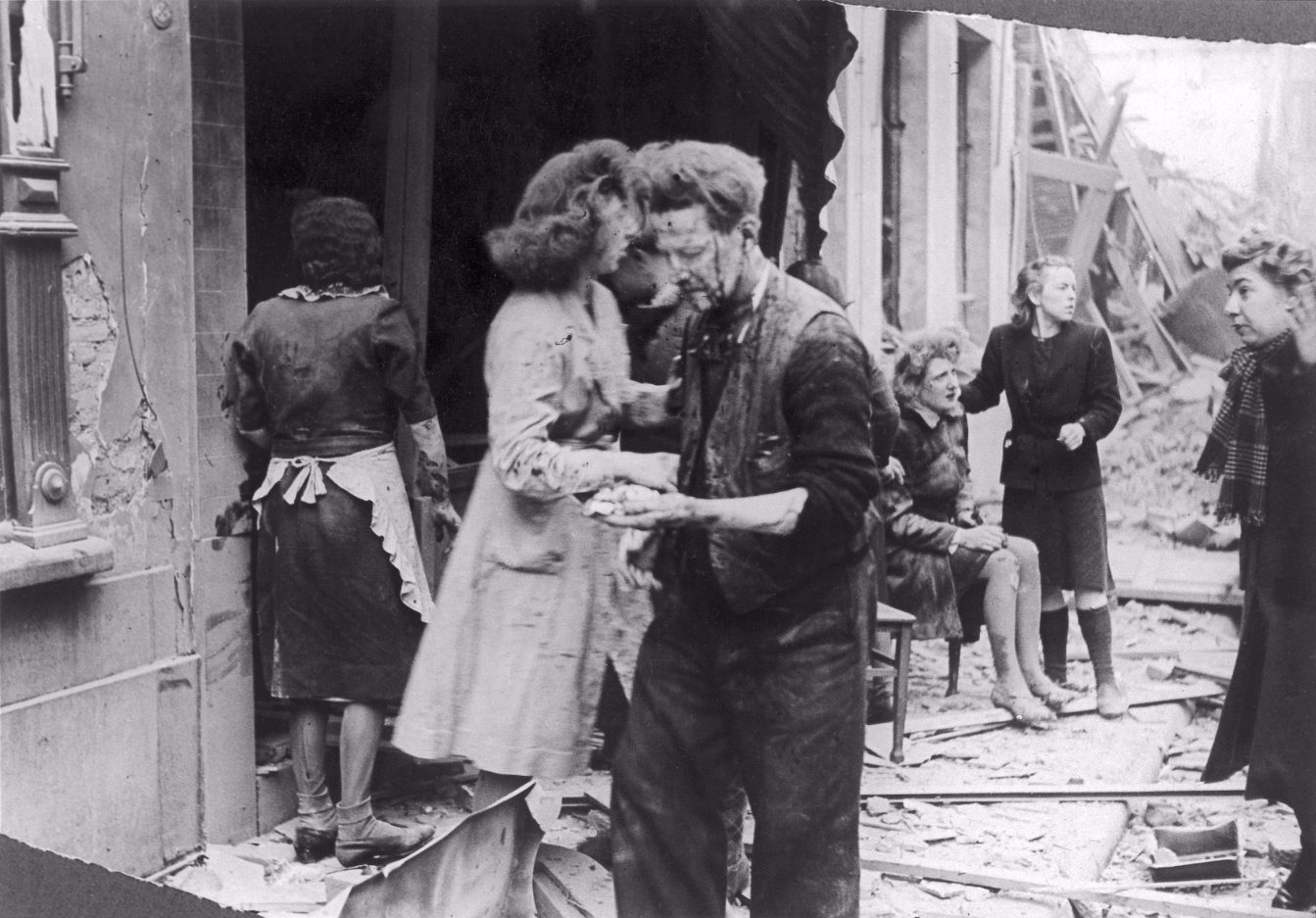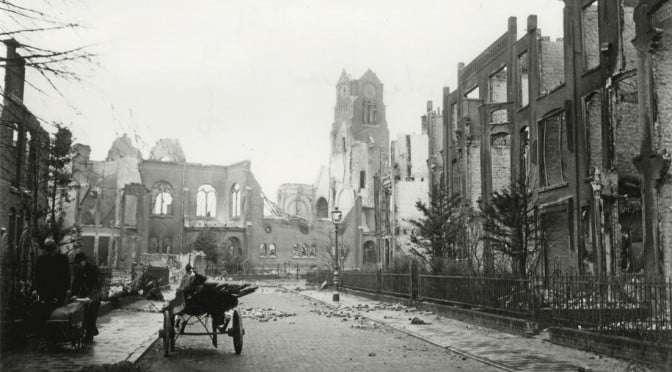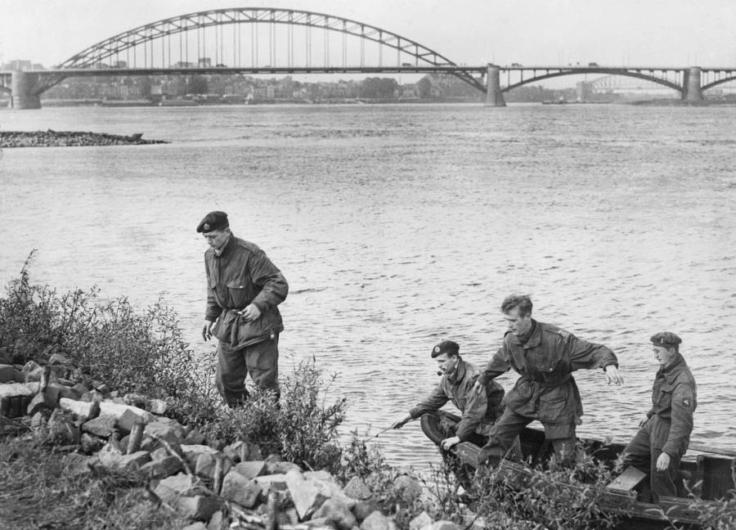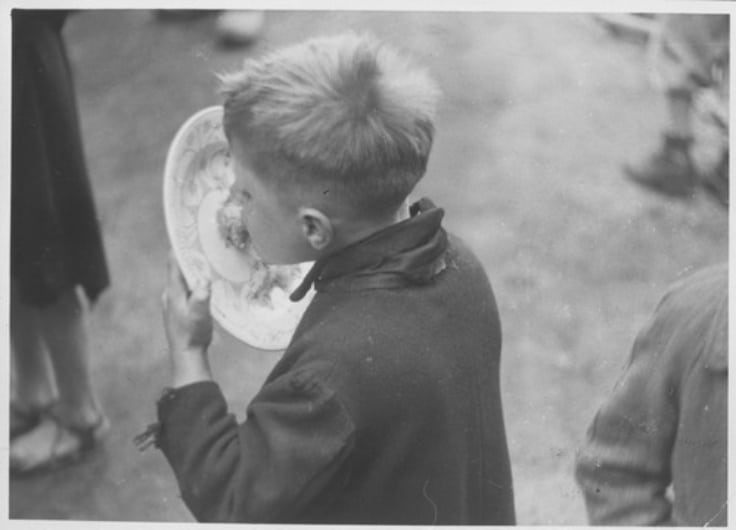75 Years Ago the Nazis Took Revenge on the Allies with the V1 and V2
During the liberation at the beginning of September 1944, most Belgians thought the war would be over by the end of the year. They didn’t realize that the Germans were still holding secret weapons: the V1 and V2 rockets. Exactly 75 years ago, on 13 October 1944, the first V1 fell on Antwerp. This was the start of a long period of fear and terror.
In reality, a few days after landing in Normandy, the Germans had already dropped their first V1 on London. In early July, these bombs were most likely dropped on Flanders as well. Both the Allies and the Germans, however, provided elusive and fragmented information. The former mainly wanted to avoid causing panic among the population. The latter wanted to prevent that the remains of the weapon would end up in the hands of the enemy, who would track German launch sites and destroy them.
Retaliatory weapons
Germany had been working on a secret weapon for a long time. It was a race between the Army and the Air Force. The former developed an unmanned aircraft powered by a jet engine (VI), whereas the latter developed a ballistic missile (V2). The V2 was the first to be ready. It was designed by Wernher von Braun and successfully tested already in August 1942. Three months later the V1 was also tested, although with varying degrees of success. As it turned out, the V1 could be produced in a faster and cheaper way.
Yet Hitler was not a big fan of these secret weapons. As long as the ground troops were making progress and the German bombers were reaching their goal, there was no real need for expensive, resource-guzzling experiments. However, when the odds were stacked against them and the German troops had to be pulled back, Hitler became convinced of the value of the new weapons. They would be retaliation for the Allied bombings that killed thousands of people in German cities, such as Lübeck and Hamburg. The V stands for “Vergeltungswaffen”.
 Aerospace engineer Wernher von Braun amidst German officers
Aerospace engineer Wernher von Braun amidst German officers© Wikimedia Commons
Both weapons were tested at a base in Peenemünde, near the Baltic Sea. From September 1942 and onwards, V1 prototypes were launched there. The V1 flying bombs weren’t very reliable yet. When Hitler attended a demonstration in January 1943, the bomb crashed only a few seconds after the launch. Furthermore, the launch base was discovered by Allied reconnaissance flights (“spy flights”) and in the night of 17 to 18 August 1943, a large air attack took place that involved nearly 600 Allied bombers. The test center remained largely intact, but the Germans realized that the enemy had discovered them and new bombings would follow. The German Supreme Command decided to transfer the entire production of V-weapons as quickly as possible to an underground complex near Nordhausen.
Here, the Mittelbau-Dora concentration camp was established and prisoners were forced to further excavate existing mineshafts. From January 1944, the site became the production unit for V1 and V2 bombs. Over 60,000 prisoners were made to work here under inhumane conditions. The exact number of deaths is unknown, but it is estimated to be 20,000. Thousands of Belgians and Dutch people have also worked in Dora. Thorough historical research has been conducted as to their fate, and that of their fellow French campmates.
The purpose of the “flying bombs” was to spread terror among the civilian population, especially in London and Antwerp. The liberators had regained control over the Belgian port city, which had remained relatively intact. It now functioned as a port of entry for the Allies. It became one of the main targets of the German “flying bombs”. Liège was also an important target.
Destructive bombing raid
The V1s were launched from catapult ramps or aircraft. Most of the launch facilities were located in France and the West of the Netherlands, but later also in the East. In the beginning, the Nazis built immense platforms for the V2. The Operation Todt, responsible for the construction of major war infrastructure, was ordered to build 96 V1 launching bases and five huge bunkers in northern France. Today this is where the historic center of La Coupole is located. These Northern French constructions were quickly discovered by the Allies, after which they were heavily bombed. None of the units ever really became operational. The V2s were eventually fired from mobile units, situated predominantly within the Netherlands.
 La Coupole, near Saint-Omer
La Coupole, near Saint-Omer© Jean-Luc Boin
A total of more than 22,000 V1s were fired, of which 6,500 reached England and approximately 7,000 breached the Belgian borders. They claimed a total of 11,000 victims, of whom 4,000 were Belgians. In addition, about 4,000 of the V2s were launched. England was hit by 1,135 rockets, and Belgium by 1,664 rockets, of which 1,610 fell down in Antwerp. A total of more than 6,000 people were killed, 50 per cent of them in Antwerp.
16 December 1944 was the bloodiest day in the history of flying bombs. That Saturday at 15h23 a V2 fell on the sold out Rex Cinema. The people of Antwerp, but also many English soldiers, were enjoying The Plainsman, a western movie about Buffalo Bill. The total number of deaths was tragic. A total of 537 visitors were killed, 291 were injured. It was the heaviest bombing during World War II. Meanwhile, the broader city of Antwerp also suffered casualties, which brought the death toll that day to 667. This created a real psychosis of fear. Whereas up until now people had not shifted their lifestyles in response to the “flying trees”, from then on public life became restrained. Events where many people gathered became forbidden, children were evacuated to the countryside and an important part of daily life would take place in air raid shelters.
 Victims of the V2-bombs in Cinema Rex in Antwerp, 16 December 1944.
Victims of the V2-bombs in Cinema Rex in Antwerp, 16 December 1944.© Koen Palinckx
The fact that 16 December 1944 was a bloody day in history should come as no surprise. It was the day the Ardennes Offensive began. A rain of V1 and V2 missiles had to fall on Belgium in order for the attack to succeed. From 16 December till the end of January 1945, Liège was also constantly bombed with V1s. The V1s that fell on Antwerp were mainly launched from different places located in the Zutphen-Zwolle-Enschede triangle. As a result, many victims were killed in the Netherlands as well. The V1s weren’t always calibrated accurately and would sometimes drop down too early.
Additionally, the Allied bombing of launch facilities caused many casualties in the Netherlands. A notorious example is the bombardment on 3 March 1945. The target was the forest in The Hague that the Germans had used as a launch site for V2s. The Allied pilots, however, received wrong information and they dropped 61 tons of bombs on Bezuidenhout, a residential area in the Hague. A total of 550 were killed, 3,300 houses were destroyed and almost 50,000 people fled the city.
 Bezuidenhout, a residential area in the Hague, after the bombardment
Bezuidenhout, a residential area in the Hague, after the bombardment© City archive The Hague
The last V1 fell on 29 March 1945 in England. Two days before, the last fatality was reported in Belgium. After eight months of terror, the civilians were able to get out of their bomb shelters. The Americans conquered the production sites in Germany. Soon after, they saw the horrors of concentration camps with their own eyes. They filmed everything they witnessed to show the world what had been taking place. However, their attitude toward the key players in the development and production of the V-weapons was ambiguous. Almost all engineers of missile technology were able to escape justice and welcomed with open arms by the Americans and the Russians. Wernher von Braun is the prime example. He would later play an important role in the American space program.
 Wernher von Braun en John F. Kennedy in 1963
Wernher von Braun en John F. Kennedy in 1963© NASA
What was the final outcome of the V offensive? First and foremost, it caused a lot of human suffering. Thousands of people lost their lives; sometimes even entire families were murdered. Furthermore, the material damage was enormous. The advance of the Allies was also delayed. The war lasted much longer. The Allied bombardments also caused many casualties. In the end, thousands of civilians have paid for the highly advanced military technology with their lives.








